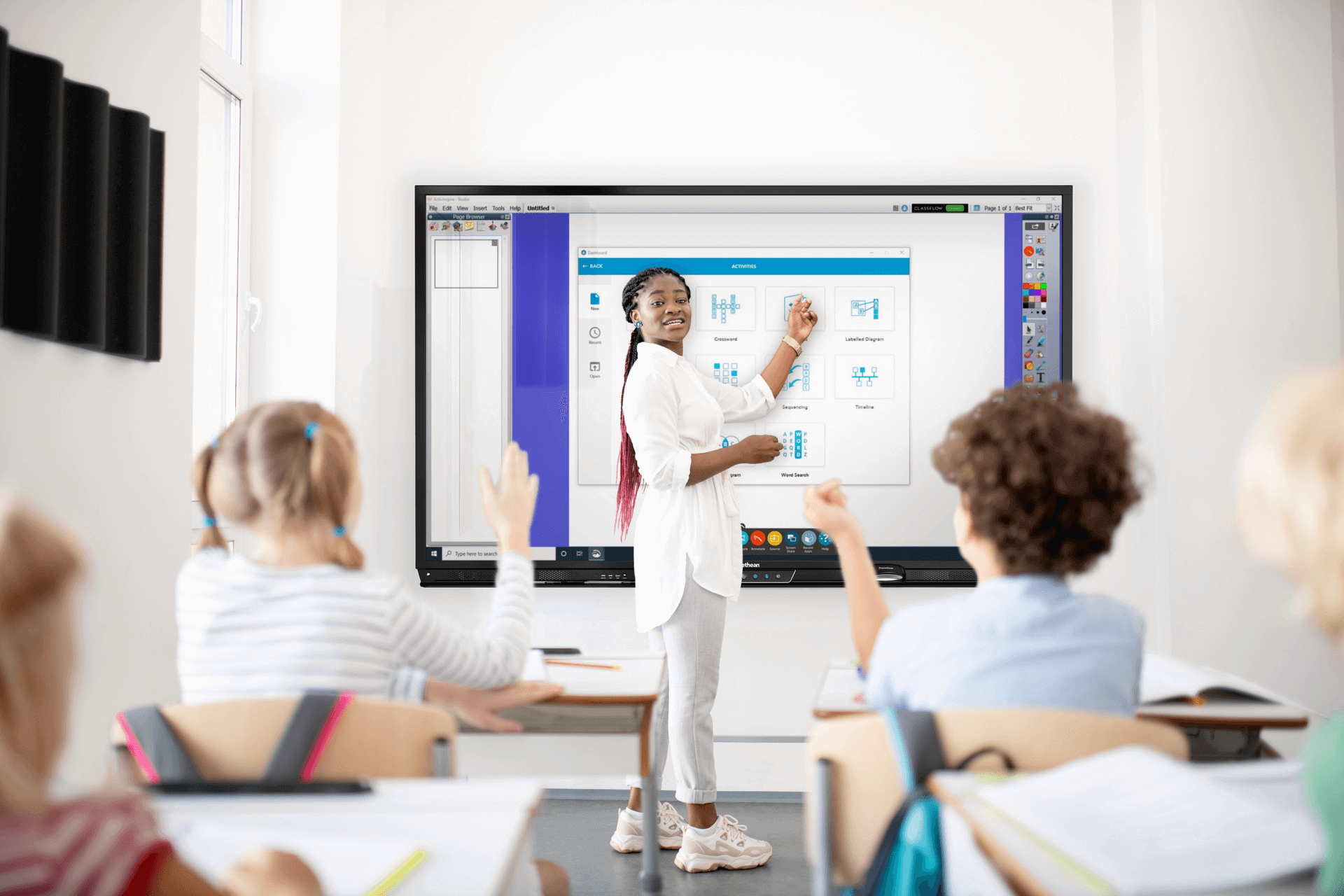Revolutionizing Education and Collaboration: The Rise of the smartboard

Technology continues to transform the way we learn, teach, and collaborate. One of the most significant innovations in classrooms and offices over the past two decades is the smartboard. More than just a digital replacement for the traditional chalkboard or whiteboard, the smartboard has reshaped the entire learning and presentation experience.
This article explores what a smartboard is, how it works, its uses in education and business, and why it’s becoming a standard tool in modern environments.
What is a smartboard?
A smartboard is an interactive whiteboard that combines a display screen with touch-sensitive capabilities. It allows users to control computer applications directly from the board, write or draw with a digital pen or finger, and collaborate in real-time with others. Typically, a smartboard is connected to a computer and a projector (or now, often integrated with a large-format interactive flat panel display).
Unlike traditional boards, smartboards can display multimedia content, allow handwriting recognition, save annotations, and even connect to the internet—all in one place.
How does a smartboard work?
Smartboards function through a combination of hardware and software. The primary technologies used include:
- Touch detection: Infrared sensors or resistive touchscreens detect finger or stylus movements.
- Digital inking: Allows users to write or draw digitally on the board.
- Software integration: Programs like SMART Notebook or Microsoft Whiteboard enable real-time interaction, saving, and sharing.
- Wireless connectivity: Some smartboards support wireless casting from tablets, laptops, or smartphones.
When a user touches the smartboard the signal is sent to the connected computer, which interprets the gesture as a mouse click or pen stroke. This interaction is then mirrored on the projected or displayed screen.
Benefits of using a smartboard
- Enhanced Interactivity
The smartboard invites direct interaction. Whether it’s solving equations, annotating text, or dragging and dropping content, learners and professionals engage more actively than with traditional methods. - Multimedia Integration
Images, videos, simulations, web content, and slideshows can all be integrated into a single session. This dynamic content keeps audiences engaged and improves comprehension. - Real-Time Collaboration
Many smartboards support simultaneous touch points, enabling multiple users to write or manipulate content at once—perfect for group activities and brainstorming sessions. - Easy Content Sharing
With built-in saving and exporting features, everything written or shown on a smartboard can be saved as a digital file. This ensures students or colleagues can access the material even after the session ends. - Environmentally Friendly
Digital annotations mean reduced paper use. Smartboards eliminate the need for printed handouts or multiple whiteboard markers.
smartboard in Education: A Game-Changer
- Interactive Lessons
A smartboard brings lessons to life. Math becomes more visual with graph tools, science is exciting with real-time simulations, and language lessons benefit from video and audio integration. - Inclusive Learning
With features like adjustable font sizes, audio assistance, and touch-based control, smartboards accommodate diverse learning needs, including students with disabilities. - Student Engagement
Studies show students are more engaged and motivated when technology is involved. The tactile experience of using a smartboard encourages participation and curiosity. - Teacher Flexibility
Teachers can switch between different teaching resources instantly—from slideshows to live web pages to student responses—making lessons more adaptable and responsive. - Remote Learning Ready
Modern smartboards can connect with video conferencing tools, allowing teachers to conduct hybrid or fully remote classes with ease.
smartboard in the Corporate World
- Better Presentations
In meetings and boardrooms, the smartboard allows for more engaging presentations. Charts, reports, and visuals can be annotated live, making data easier to understand. - Team Collaboration
Teams can collaborate on documents, ideas, or designs in real-time. With screen-sharing, remote participants can contribute just as effectively as those in the room. - Training and Development
Smartboards make training sessions more interactive, increasing retention and participation. Trainers can use quizzes, videos, and collaborative exercises to reinforce concepts. - Time Efficiency
Meeting notes, drawings, and diagrams can be saved and distributed immediately. No more taking pictures of whiteboards or transcribing notes manually. - Integration with Business Tools
Smartboards are compatible with platforms like Microsoft Teams, Zoom, Google Meet, and Slack, making them a central hub for modern workspaces.
Types of smartboards
- Infrared (IR) smartboards
These use invisible infrared light to detect touch. They’re cost-effective and durable but can sometimes lack accuracy compared to other models. - Capacitive smartboards
Similar to smartphone screens, they offer high accuracy and multi-touch support. They are often more expensive but provide a smoother experience. - Electromagnetic smartboards
These detect a special pen’s magnetic field, allowing for precise drawing and writing. They’re ideal for artistic or technical use. - Optical smartboards
Using cameras to detect touch, these are often used in high-end models with 4K or even 8K resolution displays.
Final Thoughts
The smartboard has transformed from a futuristic gadget to an essential tool in modern classrooms and offices. With its blend of interactivity, accessibility, and versatility, it empowers teachers, students, and professionals alike. Whether you’re looking to enhance engagement, simplify collaboration, or improve knowledge retention, a smartboard can be a game-changing addition to your toolkit.
In a world increasingly reliant on digital solutions, embracing the smartboard is not just about keeping up—it’s about leading the way in how we learn and connect.
